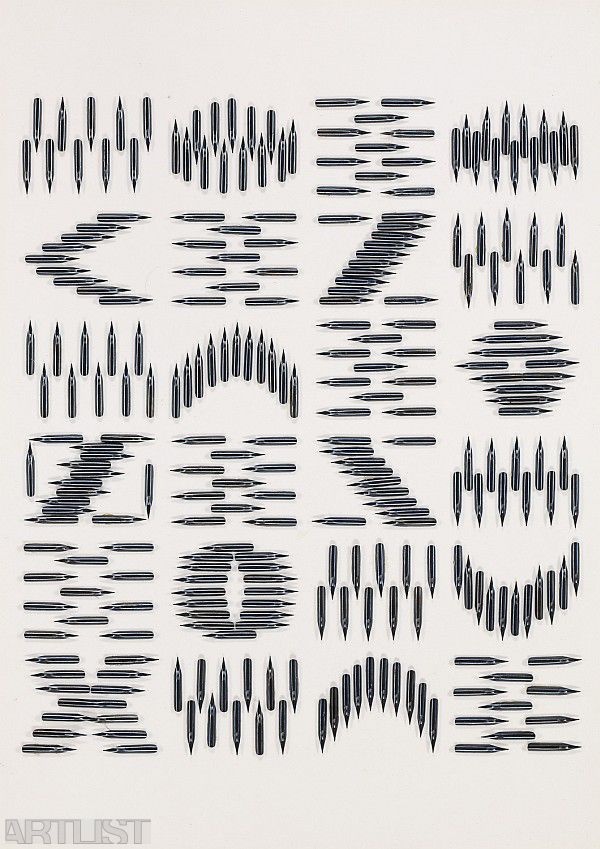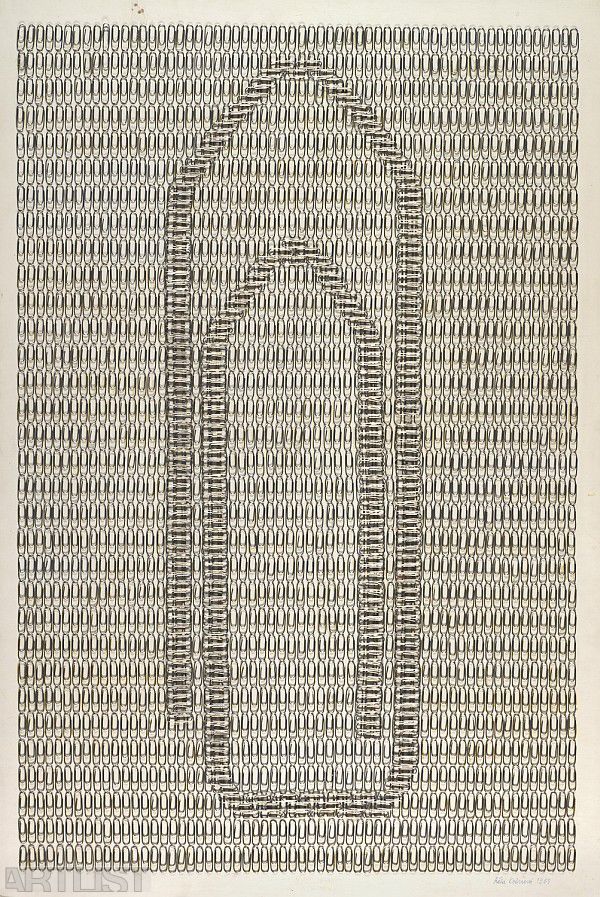Běla Kolářová
Běla Kolářová ( born March 24, 1923 in Terezín as Běla Helclová, † April 12, 2010 in Prague) was a Czech artist who was known especially with photographs and collagen. Typical motifs of her photographs and elements of their assemblages form everyday, seemingly insignificant things, often small items that are taken carelessly in his hand and just thrown away. Her works have elements of Neo -Dada and influences of constructivism.
Life
Bela Kolárová graduated in 1941 and began an apprenticeship to work in a bookstore and printing shop. After the operation was closed in 1943 by the German occupying power, she worked at the Bata shoe factory in Zlín, and thus escaped the deportation to slave labor in Germany. In Zlín she learned in 1944 Jiří Kolář, whom she married in 1949 and whose name she took. From 1952 to 1953, Jiří Kolář was because of a critical book manuscript for nine months in custody until he was released soon after Stalin's death.
1956 Běla Kolářová ill with tuberculosis. During an extended sanitarium stay, she began to photograph. She realized, " The whole world is already photographed. " Her initial works are photographs of walks in the Prague districts Vršovice, Zizkov and Vinohrady, but soon after, she moved to what was left for them as a subject within the already photographed world: just the unnoticed things, household items, discarded combs and razor blades. In the early 1960s she began, in addition to photography with the production of collagen and assemblages. In 1962 Kolářová first time in a group exhibition, which took place in Prague at the Kunstverein Manes. In 1966 she had her first solo exhibition in a gallery at the Karlsplatz, curated by Ludmila Vachtova. After the suppression of the Prague Spring ( in Czechoslovakia called " normalization" ) she could no longer issue. 1977 belonged to her husband of the first signatories of Charter 77
From 1978 to 1979, the couple spent a period of study in West Berlin, where Jiří Kolář was awarded a scholarship of the DAAD Artists Program. In the absence Jiří Kolář was sentenced in the CSSR for subversive activities. After by the state denied a return trip to the CSSR, in 1980 they went into exile in Paris. Běla Kolářová visited Prague in 1981, in order to clarify matters of the family, however, was allowed in 1985 to return to Paris at her husband. After the Velvet Revolution in late 1989 Kolářová began again to visit Prague. In 1999 she moved from Paris back to Prague.
Kolářová works, photographs and assemblages are, among others, in the collections of the National Gallery in Prague and in the Paris Museum of Modern Art.
Exhibitions (selection)
- 2003: Bela Kolárová, Amos Anderson Art Museum, Helsinki ( solo exhibition )
- 2004: The Sixties - Czech Visual Art of the 1960s, House of Art, Brno
- 2006: Bela Kolárová, Veletržní Palace of the National Gallery in Prague. ( Solo exhibition )
- 2007: Documenta 12, Kassel, Germany. On display was the work Bez názvu z cyklu nádobí of 1966, a blend of the tableware series.
- 2009: Gender Check - Femininity and Masculinity in the Art of Eastern Europe, MUMOK Vienna.
- 2011: Běla Kolářová & Lucie Stahl, Kölnischer Kunstverein.
Publications
- Bela Kolarova: Photographies 1956-1964. Editions Revue K, Alfortville, 1989, ISBN 2,950,204,759th










